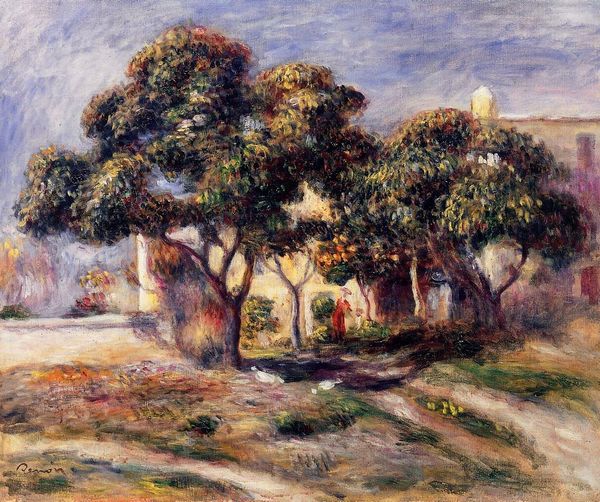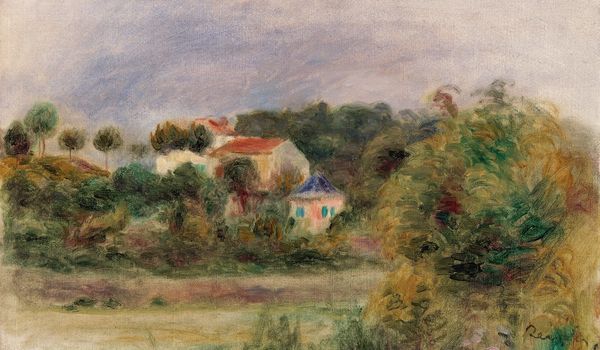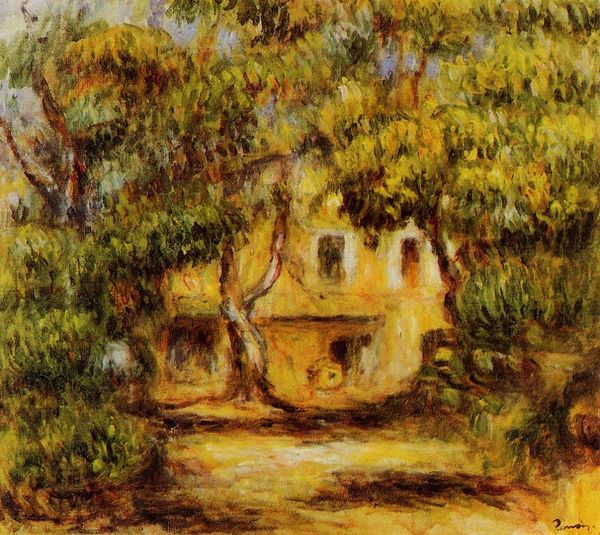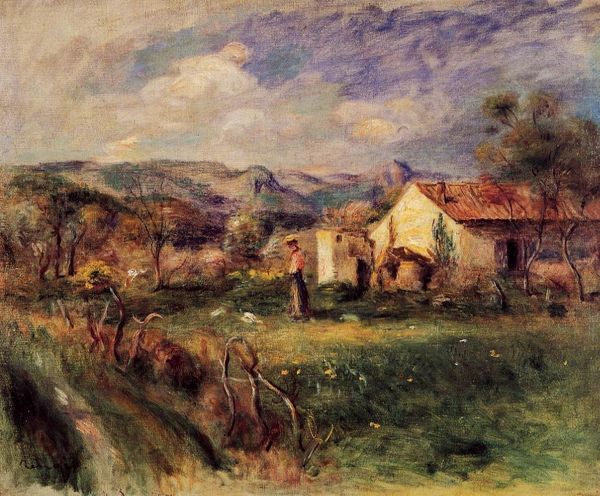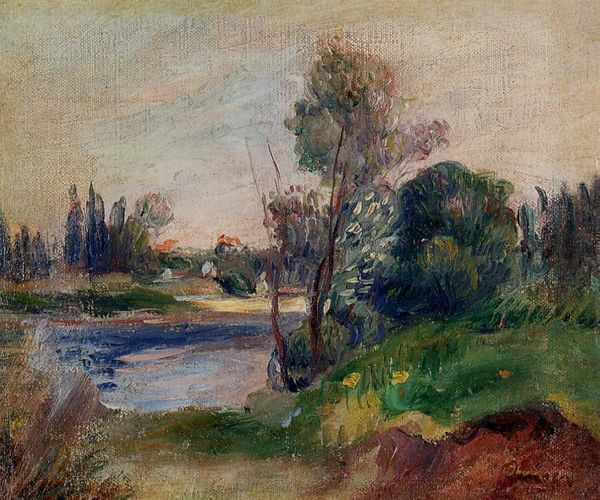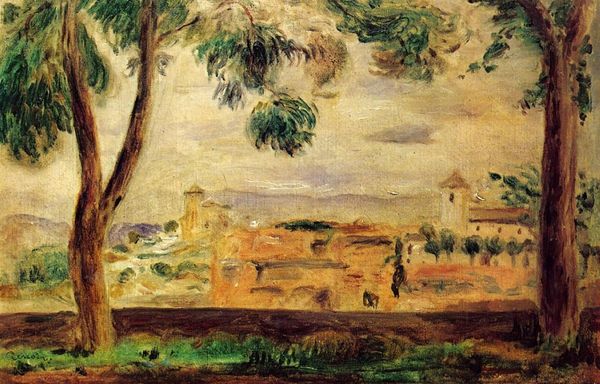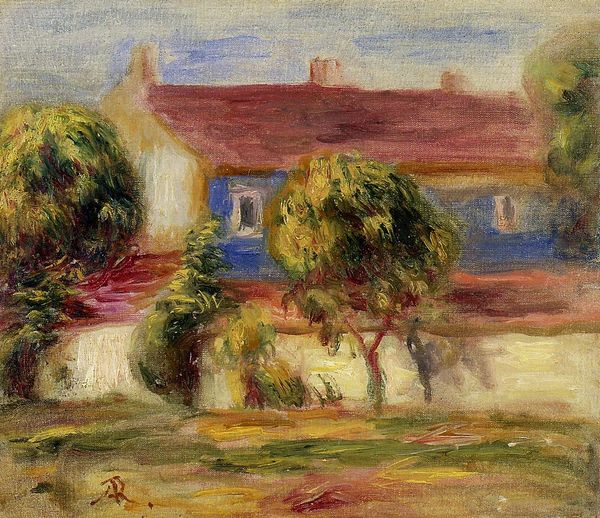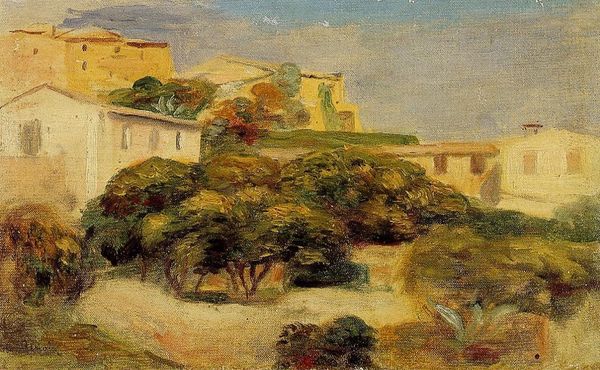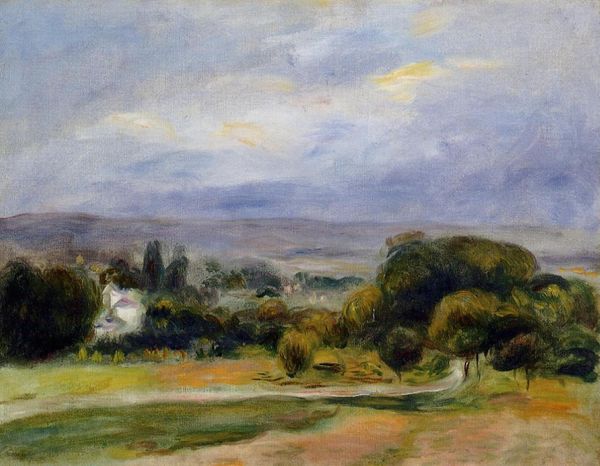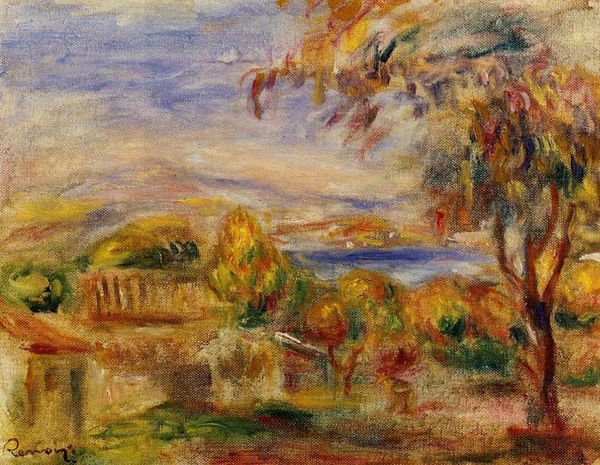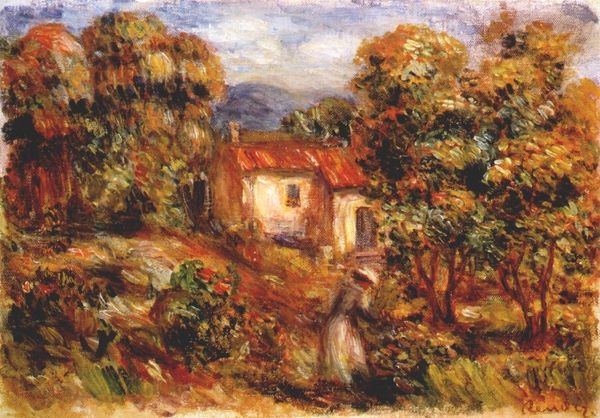
plein-air, oil-paint
#
portrait
#
impressionism
#
plein-air
#
oil-paint
#
landscape
#
impressionist landscape
#
oil painting
#
post-impressionism
Copyright: Public domain
Editor: Here we have Renoir's "Breton Landscape Church and Orchard," an oil painting, seemingly done en plein-air. It feels dreamlike, almost hazy. What's most striking to me is how the materiality of the paint itself, those visible brushstrokes, defines the forms. How do you interpret this work? Curator: Looking at this, I'm immediately drawn to the physical properties of the oil paint itself. Renoir’s method—the very application of pigment to canvas in open air—speaks volumes about the changing role of the artist in late 19th century France. What kind of labour was required to produce painting en plein air at that time? Editor: That's interesting. I hadn't really considered the labor involved beyond just the artistic skill. Curator: Exactly! Think about the manufacturing of paints, the accessibility of portable easels. This shift away from the studio wasn’t just a stylistic choice. It reflects broader changes in industrial production and consumption, democratizing art making to some extent, by incorporating a wider range of laborers involved in manufacturing paints. And consider where and for whom Renoir produced this piece; does it offer hints to Renoir's patron demographic? Editor: So, by focusing on the materiality and production of art, we can connect it to larger social and economic shifts of the time. Did the use of oil paint specifically give Renoir, and the Impressionists, new opportunities? Curator: Precisely! Oil paints allowed for layering and blending in new ways. He is also experimenting with speed and convenience for easy outdoor handling. This landscape represents not just a scene, but a system of labor and commerce! Editor: That really reframes my understanding of Impressionism. Thanks! Curator: Indeed! It opens new ways to observe the system and economy in which the landscape becomes valuable both through aesthetic production and distribution across an active and emergent market of modern art.
Comments
No comments
Be the first to comment and join the conversation on the ultimate creative platform.
